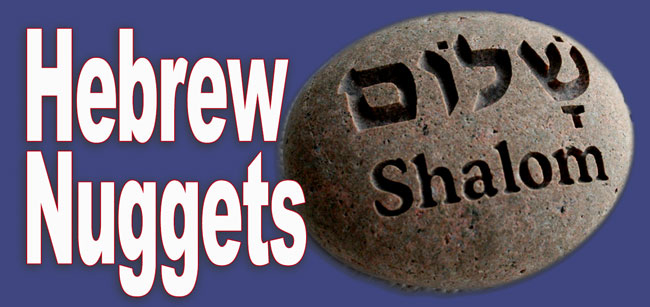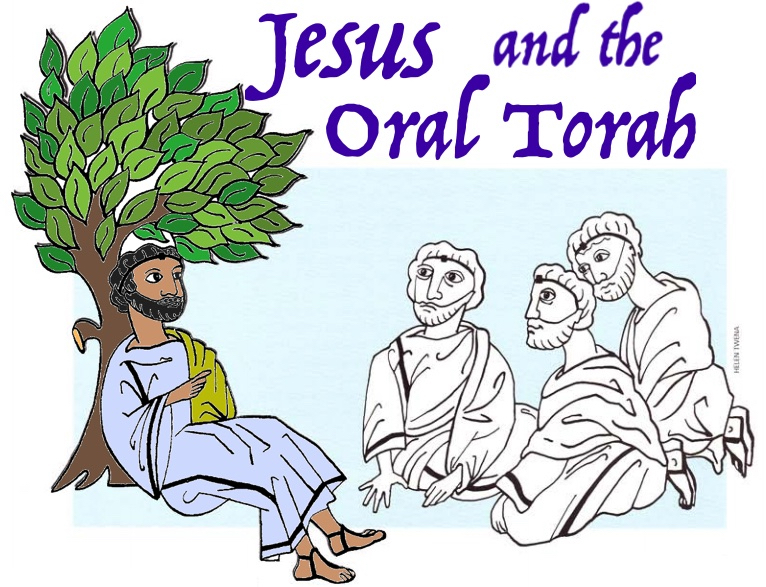In this series, Bivin attempts to show that Jesus considered the commandments of the Oral Torah to be authoritative.
Cataloging the Gospels’ Hebraisms: Part Six (Parallelism)

In this article, we will discuss the second type of parallelism: Antithetical Parallelism.
Cataloging the Gospels’ Hebraisms: Part Five (Parallelism)

Parallelism is a central feature of Hebrew poetry. It permeates the words of biblical poet and prophet. The frequency with which parallelism occurs in the utterances of Jesus is surprising, and leads inevitably to the conclusion that the Greek source (or, sources) used by the authors of Matthew, Mark and Luke derive(s) from a Greek translation (or, translations) of Hebrew documents.
Cataloging the Gospels’ Hebraisms: Part Four (Parallelism)

Doubling, or repeating, is a characteristic feature of Hebrew. Hebrew loves to say things twice (or more!) by adding equivalents. Words, phrases, sentences, and even stories, are doubled (or tripled).
Cataloging the Gospels’ Hebraisms: Part Three (Impersonal “They”)

Awareness of even the simplest Hebrew grammatical structure can bring to life a vague, or difficult-to-understand, saying of Jesus. Since potential Hebrew idioms are so dense in the Greek texts of Matthew, Mark and Luke, one has to ask, Could these apparent Hebrew idioms be evidence that the synoptic Gospels are descendants of an ancient translation of a Hebrew “Life of Jesus,” the gospel that the church father Papias spoke of when he wrote: “Matthew…arranged the sayings [of Jesus] in the Hebrew language”?
Cataloging the Gospels’ Hebraisms: Part Two (Luke 9:51-56)

Relatively few of the suggested Semitisms underlying the Greek New Testament constitute clear-cut proof for a Hebrew undertext, but a high density of Hebraisms in a given passage increases the probability that it is “translation Greek.”
Hebrew Nuggets, Lesson 23: Messiah (Part 1)

The word “messiah” arouses great emotion in the hearts of Jews and Christians alike. In Hebrew Nuggets, Lesson 23, we examine the background of this Hebrew word. There is only one new letter for us to learn in the word מָשִׁיחַ (ma·SHI·aḥ, messiah). This is the letter ח (ḥet), the last letter of the word. ח (ḥet) is the eighth letter of the Hebrew alphabet. As already mentioned, Hebrew letters also serve as numbers. Being the eighth letter of the alphabet, the numerical value of ḥet is 8.
Hebrew Nuggets, Lesson 4: Jesus’ Hebrew Name (Part 4)

Jesus’ Hebrew name is composed of three syllables: ye·SHU·a‘. In this lesson we will learn the two sounds of the final syllable of Jesus’ name. The fifth sound in Jesus’ Hebrew name יֵשׁוּע is “a” as in the word “father.” Like the tseRE and the shuRUK, this sound is a vowel. The symbol used to represent this sound is called paTAḤ. It is indicated by a horizontal line below the letter with which it is sounded. Here it appears below the last letter of ישועַ (yeSHUa‘).
Hebrew Nuggets, Lesson 3: Jesus’ Hebrew Name (Part 3)

In this lesson we will learn the two sounds of the second syllable of Jesus’ Hebrew name. The first sound of the second syllable of יֵשׁוּעַ (ye·SHU·a‘) is the “sh” sound. This is represented by ש (shin), the twenty-first letter of the Hebrew alphabet. Written with three points or teeth, it got its name from the Hebrew word for “tooth” because of the pictograph upon which it was based.
Hebrew Nuggets, Lesson 2: Jesus’ Hebrew Name (Part 2)

Many of Jesus’ words were spoken against a profoundly Hebraic background. We believe that a knowledge of Hebrew is central to understanding much of what Jesus said, and what was written about him in the Gospels. This is the second of a series of articles about the Hebrew language. Hopefully, these “nuggets” will encourage you to explore the riches Hebrew study can offer to those who want to understand the Bible more fully. The second sound in Jesus’ Hebrew name, יֵשׁוּעַ (ye·SHU·a‘), is a vowel. Hebrew vowels are represented by signs that are placed under, or sometimes, to the left of consonants (letters). A vowel is pronounced after the consonant that carries its sign.
Hebrew Nuggets, Lesson 1: Jesus’ Hebrew Name (Part 1)

In my view, Hebrew is the key to understanding the Jewish background to Jesus’ words. Jerusalem Perspective, therefore, features a serialized Hebrew course for beginners. Each issue will include a bite-sized Hebrew lesson.


